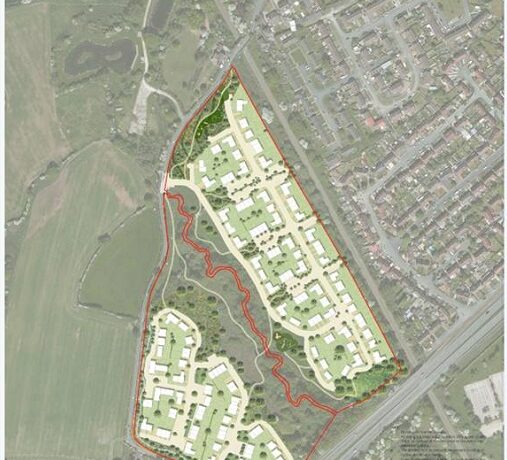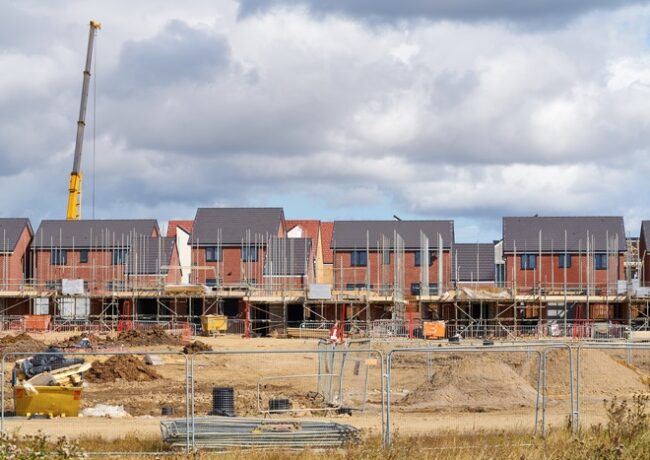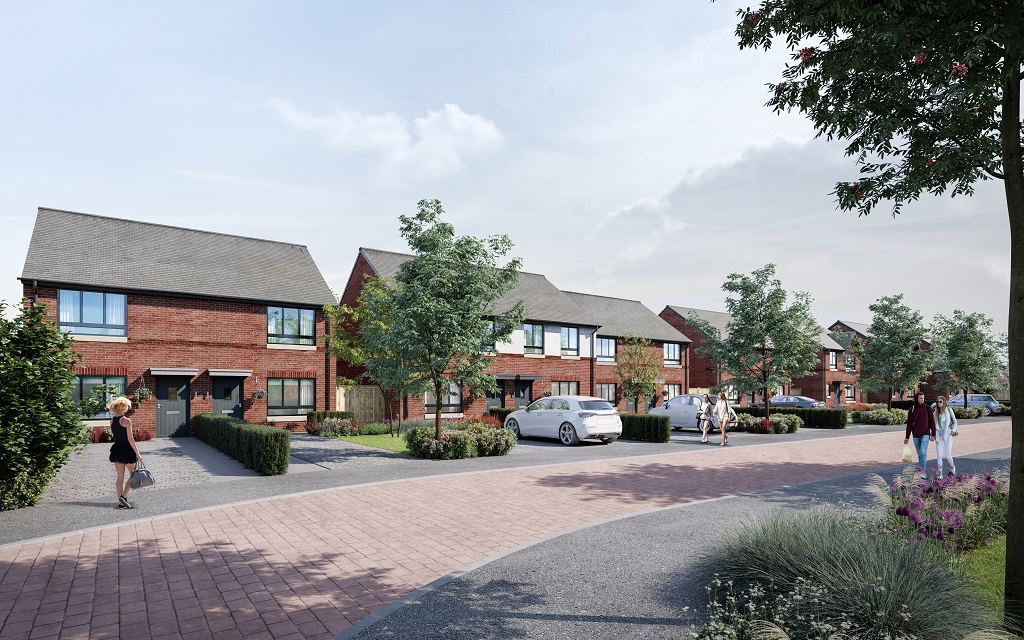Inspector allows 180 homes in Cheshire on affordability grounds
Planning permission has been granted at appeal to Hawk Developments and CTP with U+I for a large residential scheme in open countryside despite Cheshire West & Chester Council having a five-year supply of housing in place and the scheme being contrary to the development plan.
The development proposal for up to 180 homes, of which 30% would be affordable, and new public open space relates to a site on the southern side of Northwich, next to the Dane Valley, which is part of an area of significant local environmental value. The major part of the site is farmed as arable land.
The inspector concluded that the benefits of the scheme outweighed any harm, largely because it would address an affordable housing backlog. He also decided that it would improve the landscape and ecology of the site. WYG acted as planning consultants throughout the project on behalf of Hawk Developments and CTP with U+I.
Mike O’Brien, associate director at WYG, said: “This is an important appeal decision that proves that you can secure permission for new homes even where a council has an up-to-date development plan with a five-year housing supply in place. As long as the scheme has benefits which outweigh harm, it can succeed.”
Inspector Paul Singleton, agreed that Cheshire West & Chester Council could demonstrate a five-year forward supply of housing. However, he found that the council has a sizeable backlog in the provision of affordable housing which is unlikely to be met within the next five years.
The council had contended that its affordable housing figure, currently around 700 proposed units, was not intended to represent a requirement over the five years. However, the inspector agreed with the comments made in an earlier appeal decision that it was difficult to understand why the council would not seek to clear the backlog over the five-year period given that it has adopted the ‘Sedgefield method’ in relation to dealing with its overall housing shortfall.
The masterplan and its supporting elements were designed by Planit-IE, who were able to demonstrate a sensitive response in terms of visual, landscape and townscape considerations. Further, the proposals were formulated through an extensive design development process, comprising stakeholder workshops, community engagement and a Places Matter Design Review Panel.
The inspector gave limited weight to Saved Policy NE12 on Areas of Significant Local Environmental Value, which is an older policy informed by Planning Policy Statement 7 rather than the current National Planning Policy Framework. The NPPF only gives significant weight to national landscape designations, and its sole reference to the protection of gaps between settlements is in the context of Green Belts. For this reason, Policy NE12 was not fully consistent with the Framework.
Regarding other environmental policies, the Inspector considered that site contained no notable, rare or unique features and made a very limited contribution to conserving the rural/pastoral character of the valley. He found that the proposal would not result in significant harm.
The inspector considered that the scheme offered an opportunity to improve the landscape and ecology of what is intensively farmed arable land through the restoration and future management of the site’s woodland and ecological features. The scheme would also create a network of paths running through the proposed areas of recreational and amenity space, providing public access for the first time.
Singleton also found that the proposal would bring substantial economic benefits including New Homes Bonus payments, employment, and additional spending by occupants who could be potential recruits for local business. The scheme would also offer highways improvements which would provide a wider public benefit.
WYG’s O’Brien added: “Whilst appeals have been dominated by the five-year housing supply issue, this is now changing. In this case, whilst there was overall supply, the need for affordable housing was still recognised as a very important consideration. The case also proves that new development can actively enhance a rural site despite popular opinion.”




